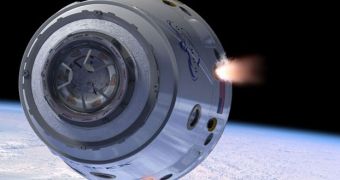At the end of last year, the Hawthorne, California-based Space Exploration Technologies Corporation (SpaceX) became the first private company to achieve orbital insertion around Earth. After writing history, the corporation is now looking ahead towards the future.
The groundbreaking moment the company has been waiting for took place on December 8, 2010, when the Falcon 9 medium-lift delivery system took off from the Cape Canaveral Air Force Station (CCAFS), in Florida.
This was only the second-ever flight for this rocket, but it already carried a new technology demonstrator, the unmanned Dragon space capsule. SpaceX engineers managed to achieve liftoff, stage separation, capsule separation, and a host of other milestones in the same flight.
After reaching low-Earth orbit (LEO), the probe managed to complete several rotations around the planet, during which time all of its primary systems were tested and verified. Afterwards, the capsule managed a successful reentry into Earth's atmosphere, and a safe water landing in the Pacific Ocean.
This achievements made SpaceX part of an exclusive club of six space agencies and nations that managed the exact same thing. The success the company is now enjoying was only made possible through its ongoing partnership with NASA.
“We believe the now flight-proven Falcon 9 and Dragon architecture is the safest path to crew transportation capability. Both vehicles were designed from the beginning to transport astronauts,” the company announces in a press release.
“The cargo version of the Dragon spacecraft will be capable of carrying crew with only three key modifications: a launch abort system, environmental controls and seats,” it adds.
At this point, the company is undergoing verification procedures from NASA. Officials with SpaceX submitted a proposal on December 13, 2010, which seeks approval to begin developing Dragon as an astronaut-ferrying capsule.
This will happen only if NASA agrees to fund the company under its Commercial Crew Development Program (CCDev2). There are three main steps that need to be fulfilled in order for that to happen”
1.initial design of abort engine and crew accommodations; 2.static fire testing of the launch abort system engines; and 3.prototype evaluations by NASA crew for seats, control panels and cabin
SpaceX official are firmly convinced that they will succeed, having received a massive boost of confidence following the December 8 test. If they create a manned capsule, they could provide NASA with access to LEO at only half the price the Russians are demanding for a seat in their Soyuz capsules, Space Fellowship reports.

 14 DAY TRIAL //
14 DAY TRIAL //